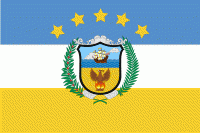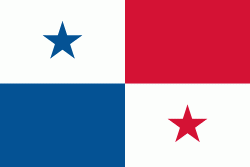Colón Province (Provincia de Colón)
 |
This province has traditionally been focused on commerce (through the Colón Free Zone, Panama Canal, and its banking activities), but also has natural resources that are being developed as a tourist attraction, such as coral reefs and rainforests. During the Spanish colonial period, the Colon region of Panama was the center of trade, commerce, and overall economy for the Spanish. They imported many black African slaves to this area to work in Panama and to ship to other Spaniard colonies.
Most of the black population in Panama is centered in the Province of Colon. Panama has two distinct groups of black people. The first and earliest black people were those who came as slaves as early as the fifteenth century, through much of the nineteenth century. They are of mixed African and Spanish descent. This group is known as Cimarrones, Afro Colonials, Nativos, Playeros, Congos. These terms have proven crucial in establishing that these are the first and original black people of the Republic of Panama. Afro Colonials have held on to their culture and adopted Hispanic customs, traits, and cultures. They took and assumed Spanish names and surnames. They also developed the beginning of Panama's black population and culture, in pure and mixed forms. They have been incorporated into Panamanian and Spanish-speaking society, as a result.
In the nineteenth century, beginning as early as the 1840s, black people from the Caribbean and West Indies immigrated to Panama to assist to build the Panama Railway and the Panama Canal. Later many black people from all over the Caribbean and West Indies, especially from Jamaica and Barbados, settled here between the years of 1880 and 1901 to build the Panama Canal. Many later settled in the Colon Province. This group of Caribbean and/or West Indian origin are called Afro Antillanos by the Hispanic Panamanians. They have assimilated to the Hispanic culture and Panama as well as holding on to aspects of their descent and culture. They have influenced the cuisine and music of Panama. Most importantly, their influence on music, especially from those of Jamaican descent invented and created Reggae en Español.
Map - Colón Province (Provincia de Colón)
Map
Country - Panama
 |
 |
| Flag of Panama | |
Panama was inhabited by indigenous tribes before Spanish colonists arrived in the 16th century. It broke away from Spain in 1821 and joined the Republic of Gran Colombia, a union of Nueva Granada, Ecuador, and Venezuela. After Gran Colombia dissolved in 1831, Panama and Nueva Granada eventually became the Republic of Colombia. With the backing of the United States, Panama seceded from Colombia in 1903, allowing the construction of the Panama Canal to be completed by the United States Army Corps of Engineers between 1904 and 1914. The 1977 Torrijos–Carter Treaties agreed to transfer the canal from the United States to Panama on December 31, 1999. The surrounding territory was first returned in 1979.
Currency / Language
| ISO | Currency | Symbol | Significant figures |
|---|---|---|---|
| PAB | Panamanian balboa | B/ | 2 |
| USD | United States dollar | $ | 2 |
| ISO | Language |
|---|---|
| EN | English language |
| ES | Spanish language |















